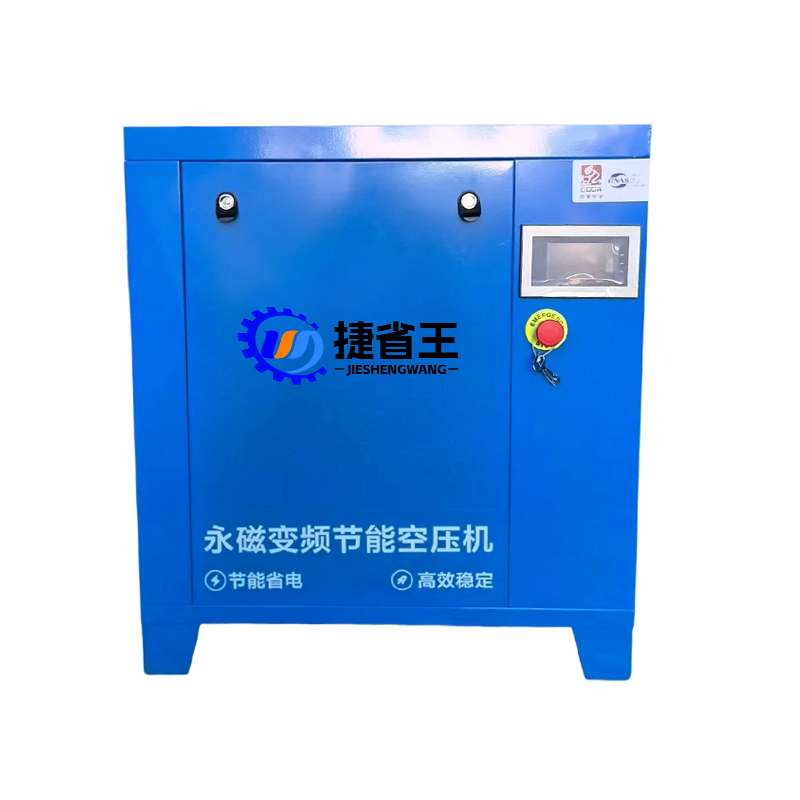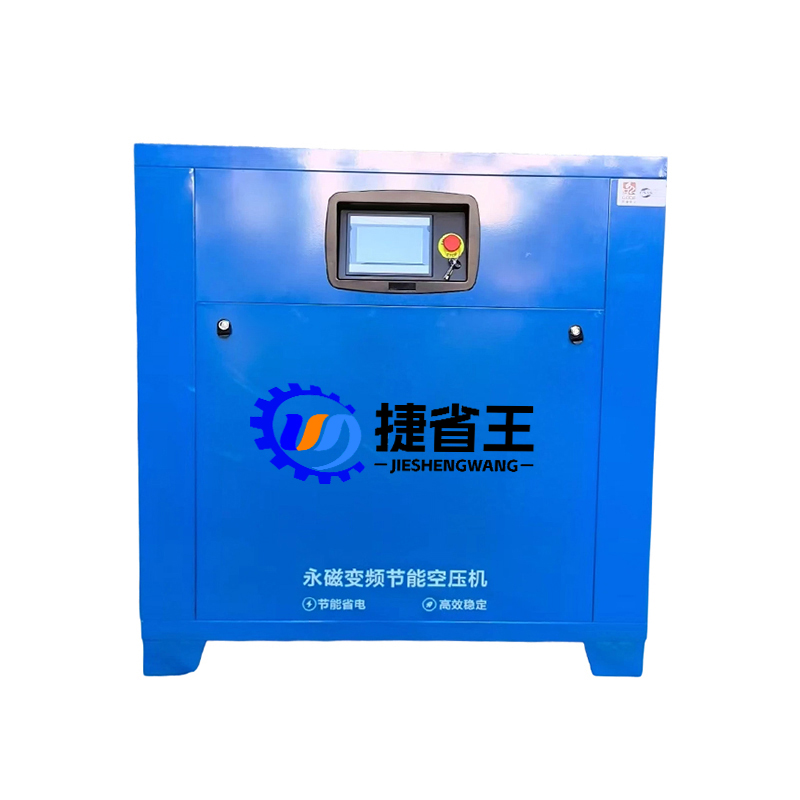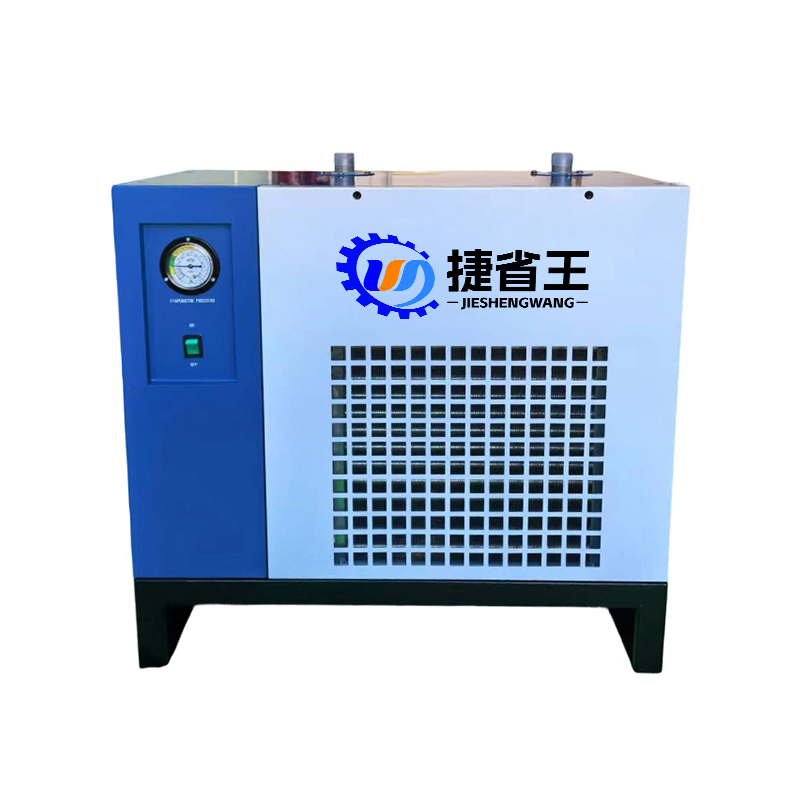How does the variable frequency control technology of permanent magnet variable frequency air compressor achieve energy-saving operation?
Release Time : 2025-05-28
The energy-saving operation of the permanent magnet variable frequency air compressor relies on the dynamic adjustment of the motor speed and output power by the variable frequency control technology, which avoids energy waste by accurately matching the actual gas demand. This technology breaks the limitation of the constant speed operation of traditional compressors and achieves high efficiency and energy saving from multiple dimensions.
The core of the variable frequency control technology is to adjust the motor speed in real time according to the actual gas consumption. Regardless of the gas consumption, the motor of the traditional air compressor always runs at a fixed speed. When the actual demand is lower than the rated output, the excess compressed air can only be discharged through the vent valve, resulting in energy waste. The variable frequency controller equipped with the permanent magnet variable frequency air compressor can monitor the pressure changes at the gas consumption end in real time like an intelligent "housekeeper". When the gas consumption decreases and the pipeline pressure rises, the controller automatically reduces the motor speed and reduces the exhaust volume of the compressor; when the gas consumption increases and the pressure drops, the speed is increased to ensure stable gas supply. This on-demand gas supply method avoids ineffective compression and greatly reduces energy consumption.
The combination of permanent magnet synchronous motor and variable frequency technology further improves the energy-saving effect. The permanent magnet synchronous motor uses high-performance permanent magnets to replace the excitation windings of traditional motors, reducing excitation losses. Under variable frequency control, the motor can respond quickly to speed changes and maintain high efficiency when running at low speeds. Compared with ordinary asynchronous motors, permanent magnet synchronous motors can more accurately match load requirements under different working conditions, efficiently convert electrical energy into mechanical energy, and reduce energy consumption from the power source. The synergy of the two enables the compressor to maintain optimal energy efficiency in various gas usage scenarios.
Variable frequency control technology also achieves energy saving by optimizing the start and stop process of the compressor. When a traditional compressor starts, the motor needs to overcome a large mechanical inertia, and the instantaneous current surges, which not only impacts the power grid, but also consumes a lot of electricity. The permanent magnet variable frequency air compressor adopts a soft start mode, and the variable frequency controller gradually increases the motor frequency and voltage, so that the compressor starts smoothly and avoids current surges. When it stops running, the controller also slowly reduces the speed to reduce the wear of mechanical parts and avoid the backflow loss of compressed air caused by sudden shutdown. This smooth start-stop control not only extends the life of the equipment, but also reduces unnecessary energy consumption.
Variable frequency control technology has the ability to intelligently adjust the output pressure, further tapping the potential for energy saving. In actual production, different gas-using equipment has different pressure requirements for compressed air. Traditional compressors often operate at the highest demand pressure, resulting in extra energy consumption for low-pressure demand equipment. The variable frequency controller of the permanent magnet variable frequency air compressor can dynamically adjust the gas supply pressure according to different working conditions. For example, when only low-pressure gas is required, the controller reduces the motor speed so that the compressor output just meets the required pressure, avoiding energy waste caused by the use of high-pressure gas pressure reduction, achieving "on-demand pressure supply", and effectively improving energy utilization.
Variable frequency control technology also saves energy by reducing the idling time of equipment. During production intervals or gas consumption troughs, traditional compressors are often in a no-load operation state and continue to consume electricity. The variable frequency controller of the permanent magnet variable frequency air compressor can automatically enter sleep or standby mode and stop the compressor operation according to the set shutdown conditions when the system detects a long period of low load or no load. When the gas demand is restored, it can quickly start and reach the required speed, reducing idling time, avoiding no-load energy consumption, and running the energy-saving effect throughout the entire operation cycle.
In addition, variable frequency control technology supports the coordinated operation of multiple compressors, further optimizing the energy-saving effect. In large-scale gas consumption scenarios, multiple permanent magnet variable frequency air compressors can be connected through a central control system to flexibly adjust the number of equipment in operation and the speed according to the actual gas consumption. For example, during low-load periods, only one compressor is started and the speed is reduced; during peak periods, the number of operating units is increased or the speed is increased to ensure stable gas supply. This cluster control method can not only avoid long-term high-load operation of a single device, but also minimize overall energy consumption through complementary operation between devices, thereby achieving system-level energy-saving goals.
The variable frequency control technology of permanent magnet variable frequency air compressor reduces energy waste from multiple dimensions and achieves energy-saving operation through real-time speed adjustment, power system optimization, improved start-stop mode, intelligent pressure adjustment, reduced idling time, and cluster control. The comprehensive application of these technologies not only reduces production costs for enterprises, but also promotes the green and efficient development of the industrial field.






